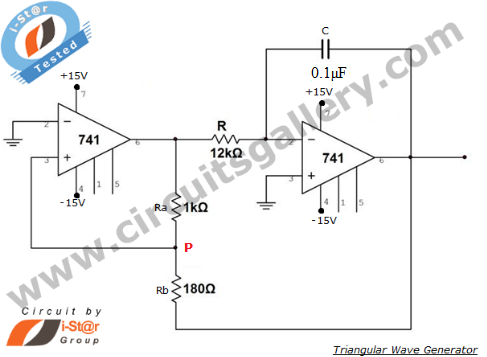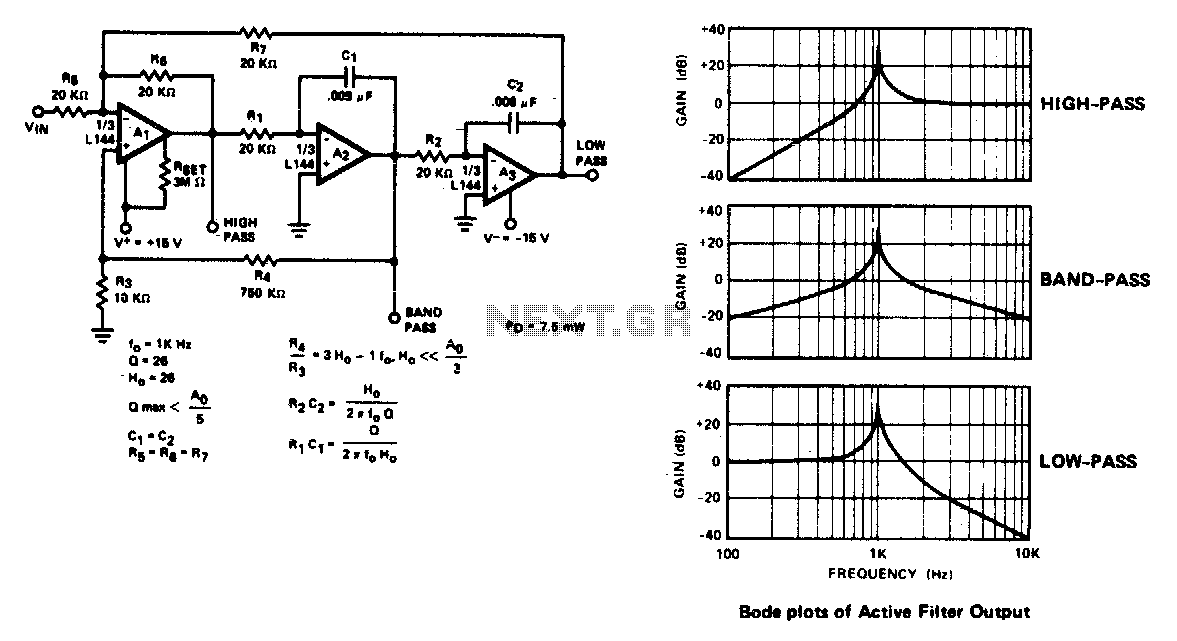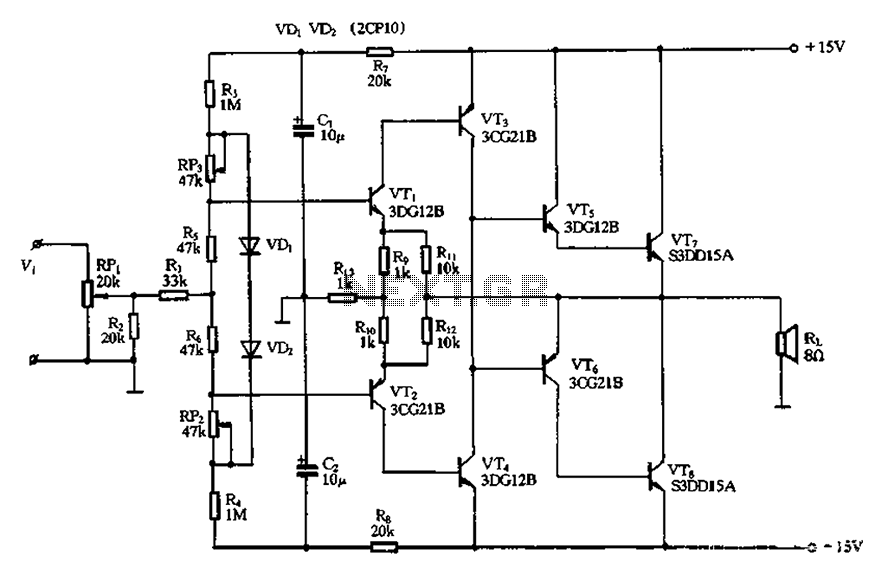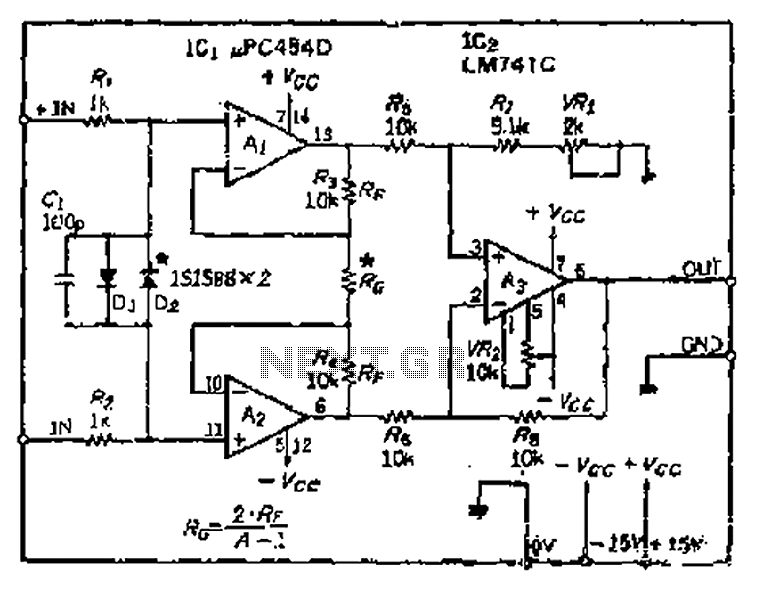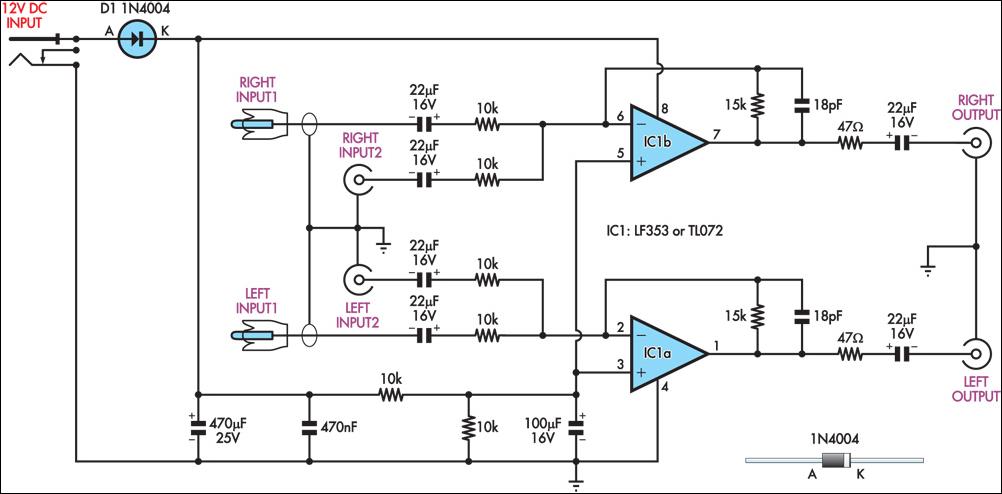
experiments with 741 operational amplifier
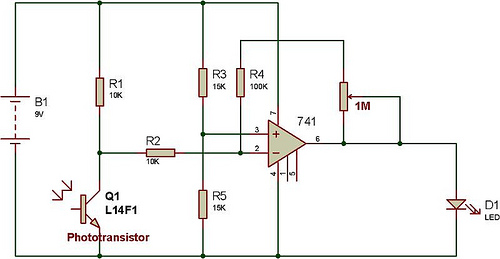
This versatile 741 operational amplifier module can be utilized to create a dark detector using a light-dependent resistor (LDR), a phototransistor, and a photodiode. The amplifier is configured in inverting mode, where it compares the voltage change at pin 2 with the reference voltage at pin 3, providing an output at pin 6 accordingly. A general calculation and the operation of a similar project have been explained on buildcircuit.com.
The 741 operational amplifier is a widely used device in various analog applications due to its versatility and ease of use. In this context, the dark detector circuit leverages the characteristics of the LDR, which exhibits a decrease in resistance in the presence of light. Conversely, in low-light conditions, the resistance increases significantly. This property is essential for the operation of the dark detector.
The circuit configuration employs the 741 op-amp in inverting mode, which allows for the comparison of the voltage levels. The LDR is connected in such a way that its resistance change leads to a corresponding change in the voltage at the inverting input (pin 2) of the op-amp. A reference voltage is applied to the non-inverting input (pin 3), which serves as a threshold level. When the voltage at pin 2 exceeds the reference voltage at pin 3, the op-amp output at pin 6 transitions to a high state, indicating a dark condition.
In addition to the LDR, the circuit may include a phototransistor and a photodiode to enhance sensitivity and response time. The phototransistor can amplify the current generated by the photodiode when exposed to light, further improving the circuit's performance in detecting changes in ambient light levels.
For practical implementation, it is essential to consider the power supply requirements of the 741 op-amp and ensure that the components are correctly rated for the intended application. Additionally, appropriate resistors may be used to set gain and adjust sensitivity, allowing for fine-tuning of the dark detection threshold.
Overall, this 741 operational amplifier-based dark detector circuit showcases the fundamental principles of analog signal processing and serves as a valuable project for understanding light sensing applications in electronics.This versatile 741 operational amplifier module can be used for making a dark detector using an LDR, a photo transistor and a photo diode. The amplifier has been configured in inverting mode. It compares the change in voltage at pin 2 with the reference voltage at pin 3 and gives output at pin 6 accordingly.
A general calculation and working of similar project has been explained on buildcircuit. com. CLICK HERE for the project. 🔗 External reference
The 741 operational amplifier is a widely used device in various analog applications due to its versatility and ease of use. In this context, the dark detector circuit leverages the characteristics of the LDR, which exhibits a decrease in resistance in the presence of light. Conversely, in low-light conditions, the resistance increases significantly. This property is essential for the operation of the dark detector.
The circuit configuration employs the 741 op-amp in inverting mode, which allows for the comparison of the voltage levels. The LDR is connected in such a way that its resistance change leads to a corresponding change in the voltage at the inverting input (pin 2) of the op-amp. A reference voltage is applied to the non-inverting input (pin 3), which serves as a threshold level. When the voltage at pin 2 exceeds the reference voltage at pin 3, the op-amp output at pin 6 transitions to a high state, indicating a dark condition.
In addition to the LDR, the circuit may include a phototransistor and a photodiode to enhance sensitivity and response time. The phototransistor can amplify the current generated by the photodiode when exposed to light, further improving the circuit's performance in detecting changes in ambient light levels.
For practical implementation, it is essential to consider the power supply requirements of the 741 op-amp and ensure that the components are correctly rated for the intended application. Additionally, appropriate resistors may be used to set gain and adjust sensitivity, allowing for fine-tuning of the dark detection threshold.
Overall, this 741 operational amplifier-based dark detector circuit showcases the fundamental principles of analog signal processing and serves as a valuable project for understanding light sensing applications in electronics.This versatile 741 operational amplifier module can be used for making a dark detector using an LDR, a photo transistor and a photo diode. The amplifier has been configured in inverting mode. It compares the change in voltage at pin 2 with the reference voltage at pin 3 and gives output at pin 6 accordingly.
A general calculation and working of similar project has been explained on buildcircuit. com. CLICK HERE for the project. 🔗 External reference
